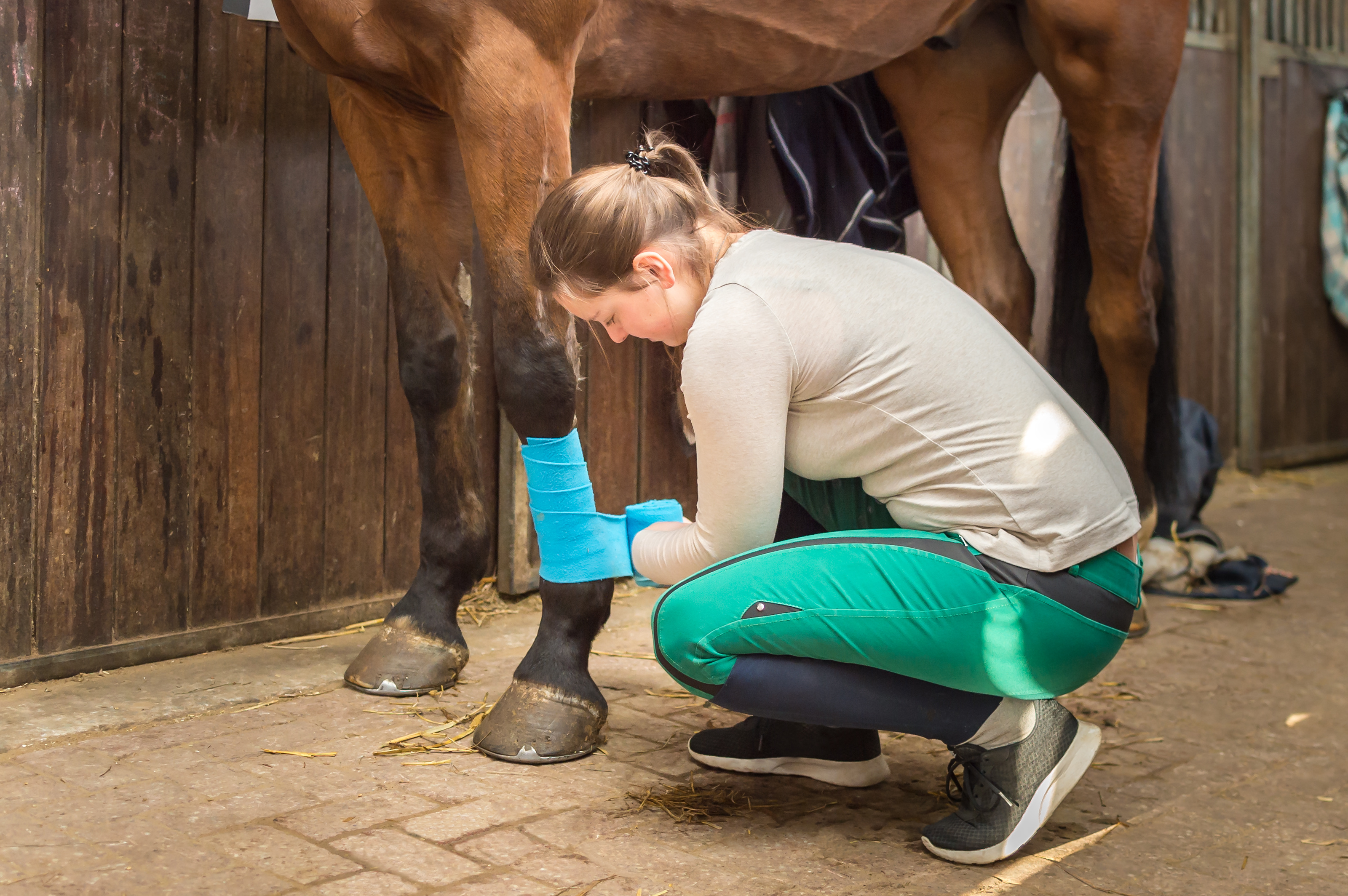
The Art of Bandaging
Bandaging your horse's lower legs can be an important part of your daily care routine. Because of the delicate nature of the lower limb, it is vitally important to understand when and when not to use bandages and also how to apply them properly. Bandaging can provide protection and support for your horse but they can also impede healing and create a dependency upon them. The art of bandaging requires practice and the correct materials to ensure success as incorrect technique can cause a great deal of harm.
WHY BANDAGE?
- Provide support for tendons and ligaments during strenuous workouts
- Increase circulation to the area by using specifically designed therapy wraps
- Keep wounds clean and free from contamination of debris
- Support bone and soft tissue injuries as they are trying to heal and set
- Prevent legs from injuries stemming from overreaching during extended movements
- Protect legs from concussion and impact during exercise, turnout or shipping
- Prevent or reduce swelling after exercise, injury or during stall rest
TYPES OF WRAPS
There are many types of wraps used for bandaging your horse's lower limbs depending on your goal. As technology continues to advance, horsemen are given more and more choices. Today, there are wraps in every shape, size, color and fabric to fit almost every need. Standing, or pillow, wraps, no bow bandages, and polo wraps are the traditional choices that vary in use depending on your horse's needs. These wraps are now available in a variety of fabrics that can enhance the therapeutic benefit of your wrap. Discussing your horse's needs with your veterinarian is a good place to start in determining which wraps will best benefit your horse.
BANDAGING GUIDELINES
If you have never bandaged a horse's legs before, ask an experienced equine professional or your veterinarian to show you the correct way. You should practice under their supervision many times before attempting to apply a lower limb bandage on your own. The first few times you apply a bandage solo, have a more experienced person double check your work to ensure correctness.
- Remove dirt, debris, soap residue and moisture from the area to prevent skin irritation.
- Start with clean, dry legs and bandages. It is important to clean bandages after each use if they are wet or soiled. Make sure they are completely dry before reusing them.
- If you are utilizing a safe topical (like Sore No-More liniments, gelotions or poultices), rub in thoroughly prior to bandaging.
- Use smooth, uniform pressure on the support bandage to compress the padding. Make sure no lumps or ridges form beneath the bandage.
- Never bandage too tightly, but avoid leaving them too loose as well. A good rule of thumb is for the pressure to never be more than 20%. If loose bandages slip, they will not provide proper support and may endanger your horse.
- Check bandages daily to ensure they are securely in place and not cutting off circulation.
- Rewrap the legs every day to minimize the chance of circulation problems caused by slippage or skin irritation due to dirt or debris entering the bandages.
- Before rewrapping, take a few minutes to examine the legs for any signs of heat, swelling or irritation. Problem areas are usually wet with perspiration.
- Allow your horse ample time to become accustomed to leg bandages before trailering, riding or leaving in their stall alone.
- Start with clean, dry legs and bandages. It is important to clean bandages after each use if they are wet or soiled. Make sure they are completely dry before reusing them.
- If you are utilizing a safe topical (like Sore No-More liniments, gelotions or poultices), rub in thoroughly prior to bandaging.
- Use smooth, uniform pressure on the support bandage to compress the padding. Make sure no lumps or ridges form beneath the bandage.
- Never bandage too tightly, but avoid leaving them too loose as well. A good rule of thumb is for the pressure to never be more than 20%. If loose bandages slip, they will not provide proper support and may endanger your horse.
- Check bandages daily to ensure they are securely in place and not cutting off circulation.
- Rewrap the legs every day to minimize the chance of circulation problems caused by slippage or skin irritation due to dirt or debris entering the bandages.
- Before rewrapping, take a few minutes to examine the legs for any signs of heat, swelling or irritation. Problem areas are usually wet with perspiration.
- Allow your horse ample time to become accustomed to leg bandages before trailering, riding or leaving in their stall alone.
- If there is a wound present, ensure that it has been properly cleaned and dressed according to your veterinarian's recommendations.
WARNING SIGNS
There are several common warning signs that your bandage may be applied incorrectly. If you note any of these, remove the bandage immediately and reassess.
- Your horse may be chewing or biting at the bandage in an attempt to remove it.
- The area above or below the bandage swells indicating that the bandage may be restricting circulation.
Bandaging your horse's legs can be an important and beneficial part of your routine but can also set back your performance goals if not applied properly. Following these simple guidelines is a great start but it is extremely important to receive training from your veterinarian or an experienced person before bandaging.



